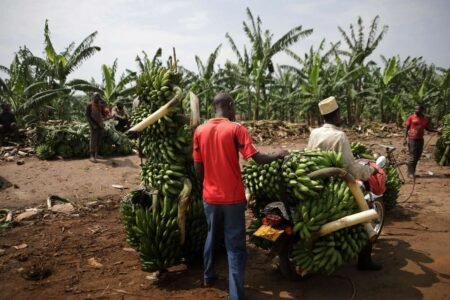New figures confirm the EU and its Member States have consolidated their place as the world’s leading aid donor in 2016. This data is based on results reported last year by members of the Development Assistance Committee of the Organisation for Economic Co-Operation and Development (OECD-DAC).
Advertisement
What do the figures show?
Preliminary OECD figures show that Official Development Assistance (ODA) provided by the EU and its Member States has reached 75.5 billion in 2016. This constitutes an 11% increase compared to 2015 levels. The EU’s assistance has increased for the fourth year in a row and reached its highest level to date. In 2016, EU collective ODA represented 0.51% of EU Gross National Income (GNI) in 2016, having increased from 0.47% in 2015. This is significantly above the 0.21% average of non-EU countries that are members of the Development Assistance Committee (DAC).
What is the EU performance regarding ODA to LDCs target?
In 2015 (2016 data will not be available until December 2017), EU ODA to LDCs reached 15.8 billion equivalent to 0.11% of GNI. Six EU Member States exceeded the 0.15% ODA to LDCs/GNI target: Luxembourg (0.40%), Sweden (0.29%), United Kingdom (0.23%), Denmark (0.20%), Finland (0.18%), and Ireland (0.15%) .
How are the numbers compiled? Who are they compiled by?
The OECD Development Assistance Committee (DAC) is the ultimate authority that decides if expenditure reported to it (by member states or other donors) qualifies as Official Development Assistance (ODA).
The DAC is currently composed of 30 members: Australia, Canada, Iceland, Japan, Korea, New Zealand, Norway, Switzerland, USA, 20 EU Member States and the EU. Two EU Member States (i.e. Estonia and Latvia) are non-DAC OECD members, while another six (Bulgaria, Croatia, Cyprus, Lithuania, Malta and Romania) are neither OECD nor DAC members.
The Commission presents individual data on all EU Member States, including on those that are not members of DAC. Otherwise the data published by the OECD and by the Commission are identical. The EU uses the same current price figures as presented by DAC in the publication of preliminary figures for 2016, reconverted from USD to EUR using the DAC exchange rate.
There are two differences in analysing the changes in ODA volumes:
The Commission presents and analyses data in Euro values, while the DAC uses US Dollars. This exchange rate difference in evaluation applies for both global figures and individual Member States.
The Commission uses values in nominal terms (current prices) for presenting changes. The DAC presents data both in constant prices and nominal terms, but calculates changes only in constant prices and exchange rates. Note that ODA to GNI ratios are not affected by the above differences.
In addition to the EU28 ODA presented by the DAC, the Commission also presents the EU collective ODA, which is a sum of the ODA reported by the EU Member States and the additional ODA provided by the EU institutions. Most of the EU institutions’ ODA spending is, for the purposes of ODA/GNI reporting, imputed to EU Member States, i.e. Member States data include part of the institutions’ spending. The ODA provided through European Investment Bank (EIB) own resources is not imputed to Member States and is additional to the Member States’ ODA.
Why is the data preliminary?
The data presented is based on information that OECD and Commission have received from Member States in recent weeks. Additional information on the details of funds and programmes for 2016 will be reported to and checked by DAC over the course of 2017. Final 2016 ODA figures with a detailed breakdown should be published by OECD DAC in December 2017.
Further information:
Press release: EU releases humanitarian assistance to Africa as needs grow


